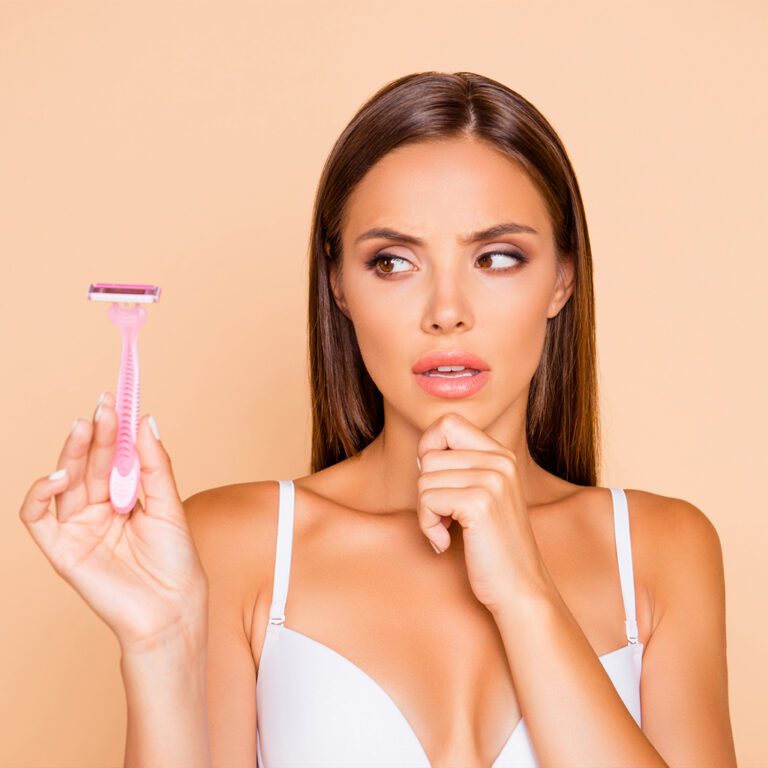A Hairy Situation
Maintaining silky smooth skin is certainly a chore – you have to shave, or wax, or pluck on a consistent basis. Unfortunately, all of that primping can sometimes cause an unsightly (and often uncomfortable) side effect: ingrown hairs.
When your hair grows, it typically leaves its follicle. But in the case of an ingrown hair, the hair reenters the follicle and gets trapped under your skin – producing a pesky pimple-like bump that’s red, raised, and irritating. While not a serious condition, you should proceed with caution before treating an ingrown hair at home. Here’s what you need to know.
Getting Rid of Ingrown Hairs
You want to remove your ingrown hair as quickly as possible, but how? While it may be tempting to put your tweezers to work, you really shouldn’t. Dermatologists recommend against tweezing, or popping, an ingrown hair bump because it increases your risk of infection.
Instead, apply a warm compress to the irritated area, then exfoliate the skin with a washcloth or soft-bristled toothbrush. This removes any lingering dead skin cells, which will help the ingrown hair emerge more quickly.
If the ingrown hair does not respond to at-home treatments and symptoms worsen, contact your primary physician.
Preventing Ingrown Hairs

Although the best way to prevent ingrown hairs is to stop shaving, waxing, or plucking, that isn’t always an option. If you do shave, use a fresh, sharp single-blade razor (dull blades increase your chances of ingrowns) and shave in the direction the hair is growing. You’ll also want to avoid shaving too closely to the skin.
Hair removal options beyond shaving and waxing, such as laser hair removal and electrolysis, provide a more long-lasting solution to hair removal and can even treat active ingrown hairs. These methods require a series of treatments over a few weeks or months.
Whatever hair removal method you choose, make sure you’re exfoliating regularly. This will help prevent dead skin cells from building up and blocking your hair follicles.

